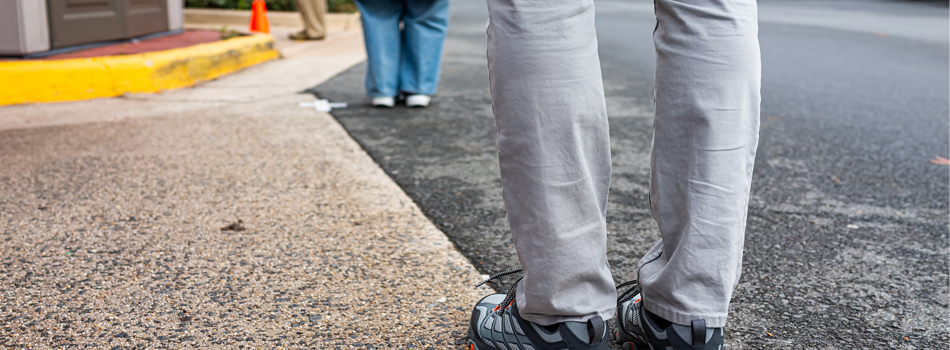By necessity, Covid-19 has transformed our day-to-day lives nearly beyond recognition. A big part of this change has been enforced by legal and rule-based changes that dictate people’s behavior, such as mandated isolation and the closing of schools, offices, non-essential shops, bars, and restaurants.
But not all behavior can be legislated. No one can actually force people to wash their hands or maintain a six-foot distance at all cost. It’s extremely difficult to stop people from gathering if they want to. But we can turn to science for help.
Behavioral science is the rigorous application of science to understand human behavior and—importantly—what influences it. We can apply techniques and use the best research and insight into nudges, heuristics, and human decision-making to understand how to influence the largest number of people to follow and comply with government recommendations around Covid-19—whether on a national, company or local level.
Make it social
One of the most important considerations here is social norms—what people perceive to be acceptable and unacceptable behaviors. We often underestimate how much of an impact social norms have on our actions, and how much we adapt our actions to fit them.
In 2004, Robert Cialdini ran an experiment to test what messaging would encourage people to conserve more energy. In the city of San Diego, he pasted messages on front doors urging residents to conserve energy. He tested a range of messaging; first, that residents should conserve energy to help future generations, second to save money, and lastly, that others in the neighbourhood had already started reducing their energy use. The only message of the three that had a positive impact on peoples’ actions was the final message, making a clear point: People don’t change behavior based on rational persuasion; they change to conform to those around them.
Social norms can also work negatively, of course. By highlighting negative habits, such as binge drinking or drug use, for example, we can also normalize the problematic behaviour, therefore making it seem acceptable and exacerbating it.
In these cases, it’s wise for governments, public figures, and NGOs to amplify correct behaviour, instead of spotlighting those people who aren’t complying. This is incredibly important in the face of Covid-19. Take the scourge of panic-buying that initially plagued many people as the pandemic spread around the world. This was in large part fuelled by images of bare store shelves and long lines to enter grocery stores.
Should governments have focused on the level of compliance and positive behavior people were engaging in by buying only what they needed, and shown images of fully stocked supermarkets, things could have been different.
In the UK, for example, if the news had reported that 97% of people were continuing to buy what they need, supported with images of full shelves, this would have worked to combat panic buying. Whist panic buying has since subsided as the pandemic has progressed this applies more generally to public wellbeing. For example, saying the vast majority of people are washing their hands regularly for 20 seconds could increase the chances of more people following recommended hygiene measures.
Overcome the intention-action gap
Sometimes the issue is not about changing people’s attitudes, but actually getting them to follow through with what they believe. Research suggests that only 53% of decisions reflect intentions.
Take exercise, for example. Research shows that between 36% and 55% of people fail to turn an intention to exercise into the act of exercising (so in good news, you’re not the only one). It also shows that a lot of people want to save money, but fail to.
This tells us that convincing people of the science behind the why of a thing likely isn’t enough to make people actually change behavior. Even if a person buys into a theory, it won’t mean they change the way they behave.
There are, however, ways to close this intention-action gap.
Piggyback existing behaviours
One way to ensure that people carry out a desired behavior into action is to piggyback a new act on top of an existing behavior. For example, the ministry of housing, communities, and local government ran a UK-wide campaign to get people to check their fire alarm when they changed their clocks to British summer time. Piggybacking on existing behaviour proved hugely successful, with as many as 40% of people who’d seen the campaign checking their fire alarm, compared to 13% of people who hadn’t.
This theory can be used to encourage the right behavior during the pandemic, too. For example, we can tie hand washing to specific events, such as every time you enter or leave key rooms or the house.
Make it easy
In one 1965 study, students at Yale University were given information about the need for getting tetanus inoculations. Initially, 3% of the group did get the vaccine. But when provided with a map and specific instructions on where to get inoculations, 28% of the students got them.
Even in the case of personal health, it didn’t matter so much whether or not people changed what they thought; the action needed to be made easy enough to accomplish.
In the pandemic, for example, it should be easy to access hand sanitizer, available when people venture out to supermarkets, or get transport, or arrive at work. Research has also shown that highlighting the hand sanitizer with red signs significantly increases usage. Making hand wash easy to spot and use is therefore more important than convincing people to actually use it.
If we are going to slow down this pandemic, behavioural change is vital. There are shifts we all must make if we are going to have a real impact. Supporting official advice with behavioral science techniques will, alongside other developments, help ensure we minimise the impact of Covid-19 on everyone.
This article was written by our head of behavioural planning, Will Hanmer-Lloyd, and was originally published on Quartz. To read the original article, visit Quartz.






